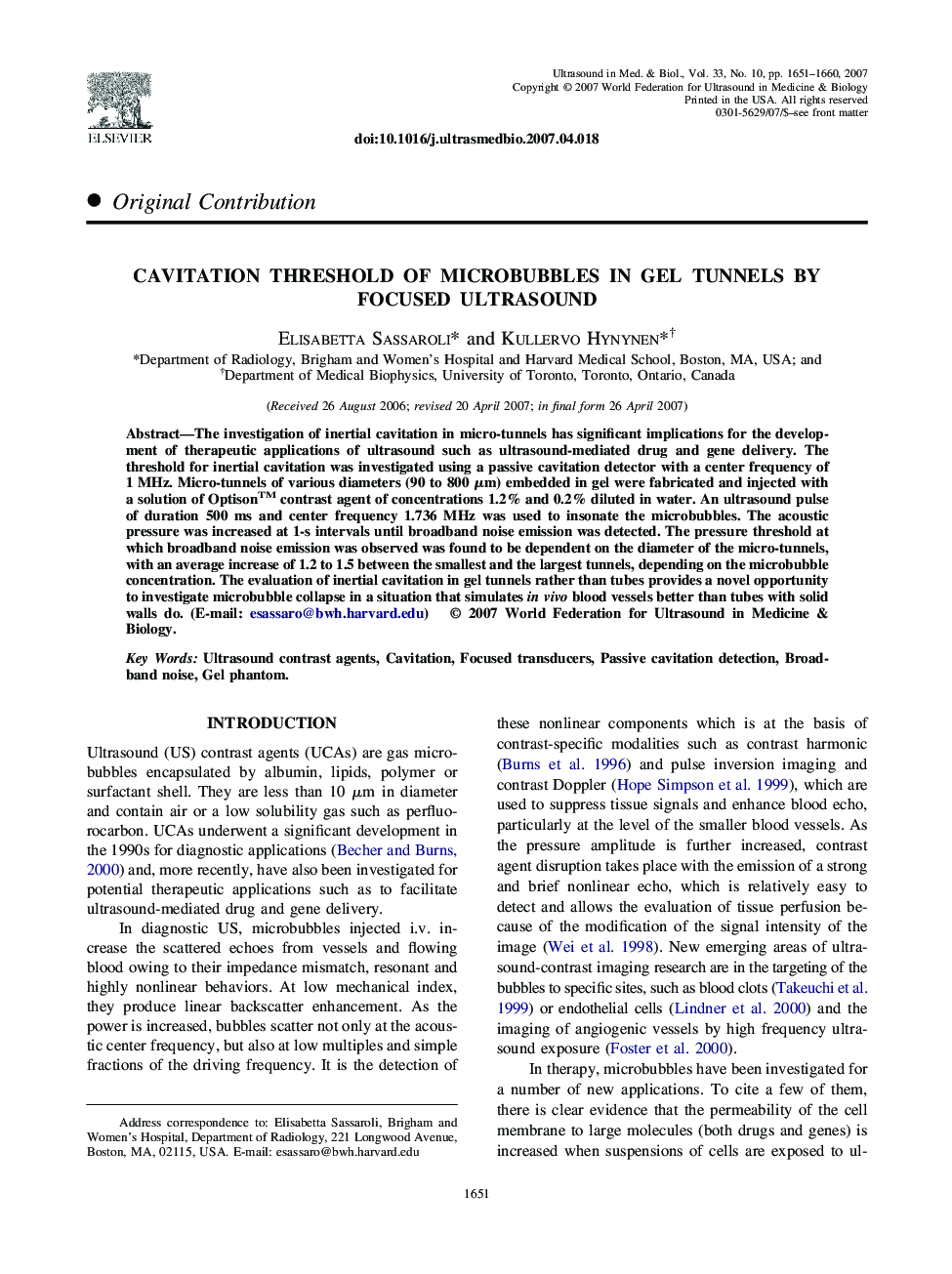| Article ID | Journal | Published Year | Pages | File Type |
|---|---|---|---|---|
| 1762466 | Ultrasound in Medicine & Biology | 2007 | 10 Pages |
Abstract
The investigation of inertial cavitation in micro-tunnels has significant implications for the development of therapeutic applications of ultrasound such as ultrasound-mediated drug and gene delivery. The threshold for inertial cavitation was investigated using a passive cavitation detector with a center frequency of 1 MHz. Micro-tunnels of various diameters (90 to 800 μm) embedded in gel were fabricated and injected with a solution of Optison⢠contrast agent of concentrations 1.2% and 0.2% diluted in water. An ultrasound pulse of duration 500 ms and center frequency 1.736 MHz was used to insonate the microbubbles. The acoustic pressure was increased at 1-s intervals until broadband noise emission was detected. The pressure threshold at which broadband noise emission was observed was found to be dependent on the diameter of the micro-tunnels, with an average increase of 1.2 to 1.5 between the smallest and the largest tunnels, depending on the microbubble concentration. The evaluation of inertial cavitation in gel tunnels rather than tubes provides a novel opportunity to investigate microbubble collapse in a situation that simulates in vivo blood vessels better than tubes with solid walls do. (E-mail: esassaro@bwh.harvard.edu)
Related Topics
Physical Sciences and Engineering
Physics and Astronomy
Acoustics and Ultrasonics
Authors
Elisabetta Sassaroli, Kullervo Hynynen,
